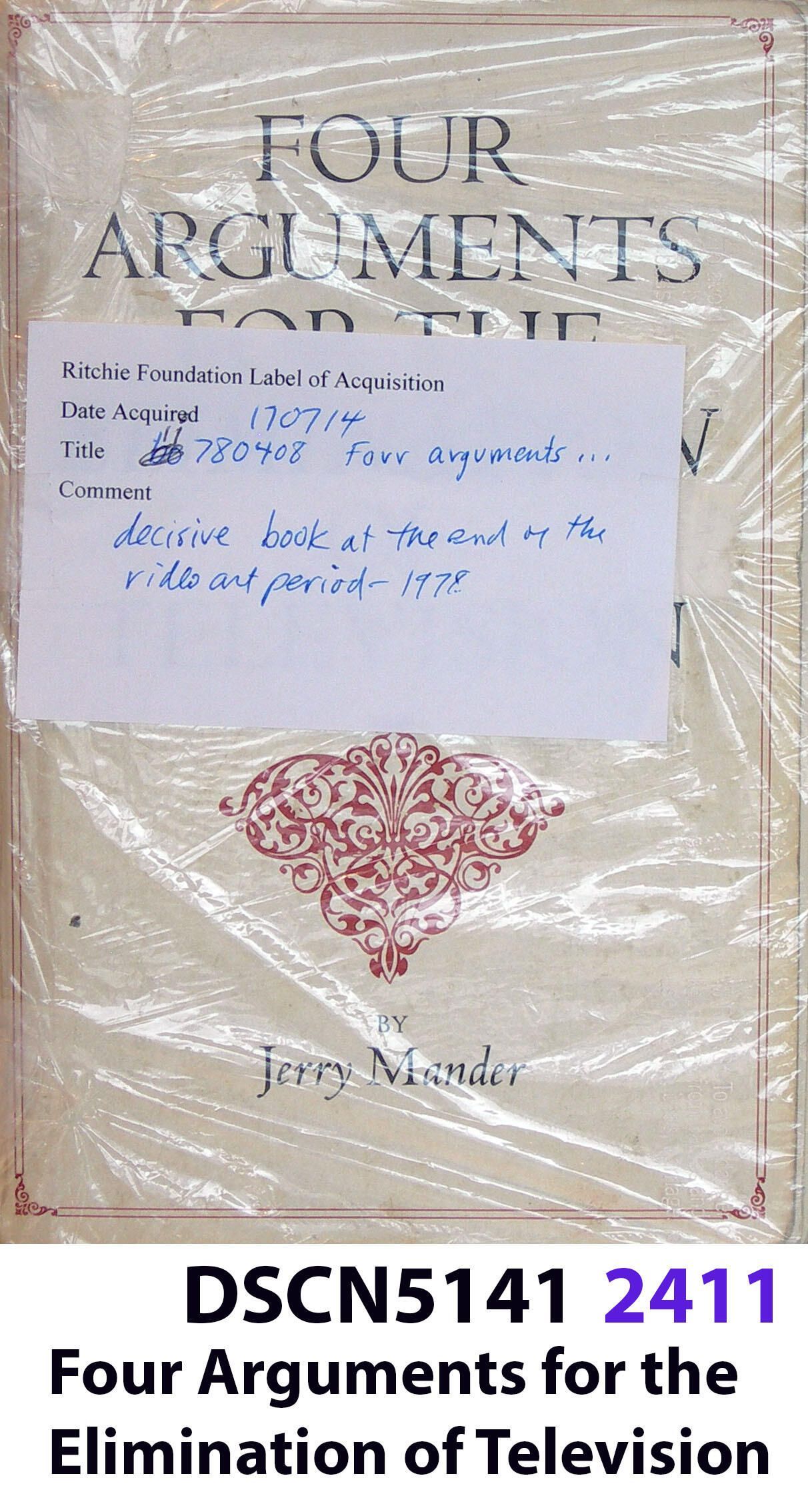Four Arguments for the Elimination of Television

Four Arguments for the Elimination
This was a decisive book for Bill Ritchie because when he bought it in 1978 and the video art class at the University of Washington, which he had originated, was going strong. But it was also contentious. On one hand, it was putting Bill in the spotlight as the go-to guy in Seattle's video art scene and winning him grants and invitations to speak in public. On the other, it was creating friction between him and most of the other, forty-some people teaching and administering in the School of Art. It probably helped Bill move away from and stop teaching Video Art and taking up computer graphics in its place. Video and computers were converging, after all. Many of Mander's arguments against TV were based on scientific evidence that broadcast television was damaging - some of it from brain research and most of it in sociology and politics. It showed TV certainly is Pandora's box. Bill (and many others) thought it didn't have to be that way, that it could be an art form. And it was true, with artists like Bill Viola, Nam June Paik, and Gary Hill - only three off the top of Bill's thoughts. Hundreds more are listed on Wikipedia today. It made no difference what Mander wrote - TV did live up to his dire forecasts. Note: This book is falling apart and worthless but it will remain in the collection; anyone wanting to buy it can get it for about a dollar online, or as a PDF to read freely.
